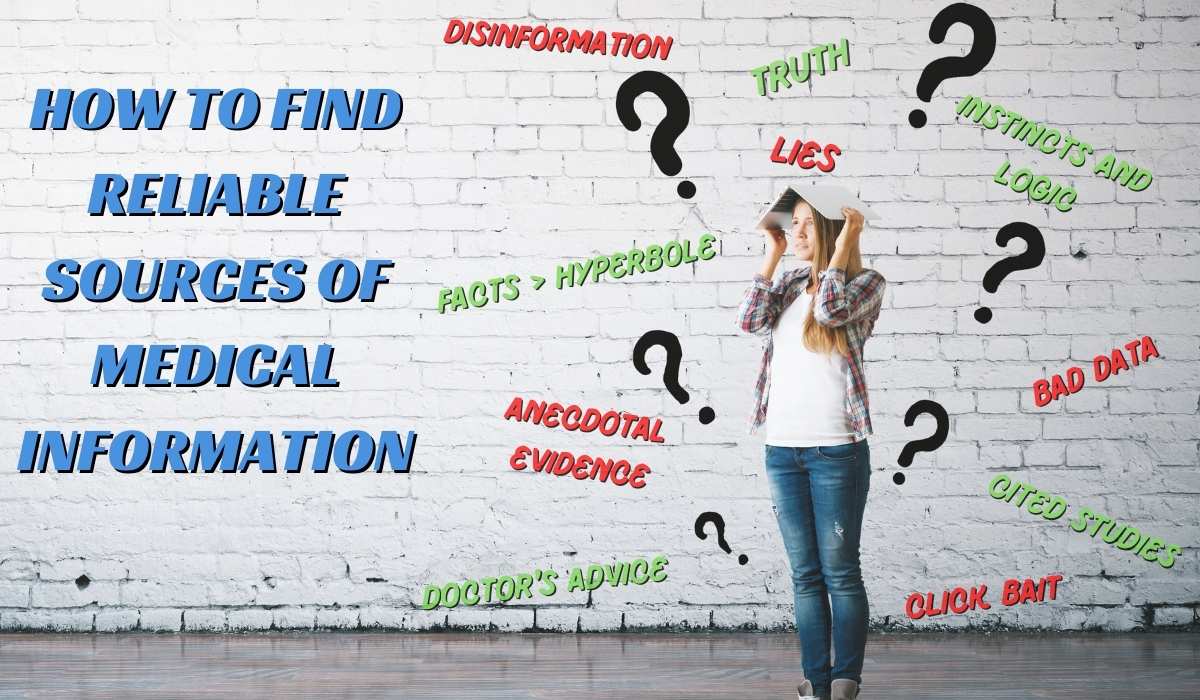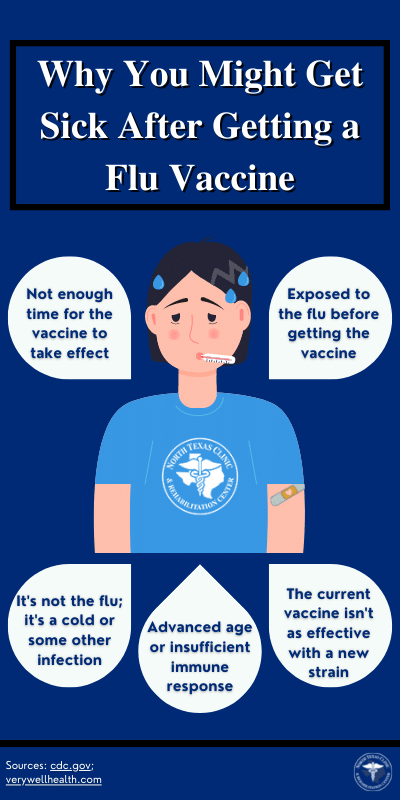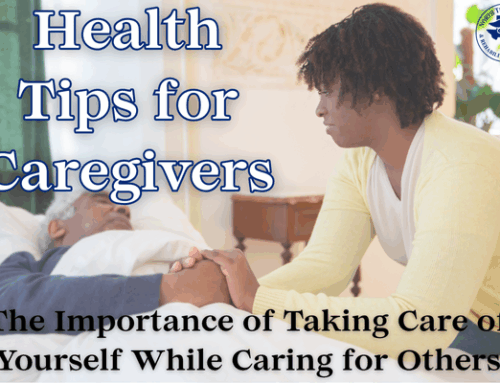
Knowing how to find reliable sources of medical information is critical when making decisions about your healthcare. But separating fact from fiction has become increasingly complex.
When it comes to your health, that’s a problem.
The internet has been an incredible place to learn things you couldn’t have before its creation. The vast amount of knowledge available is awe-inspiring and, at times, overwhelming. We often hear about news and information almost as soon as it happens.
That’s the good part.
The bad news is that so many people share opinions, beliefs, and blatant misinformation in the form of facts. When we trust these people, be they celebrities, influencers, or even some self-proclaimed medical professionals, we assume they know what they’re talking about.
So how do you know who to believe? How do you find consistently reliable sources of medical information with so many options available?
Unreliable vs. Reliable Sources of Medical Information
Nobody’s perfect, and doctors and scientists get things wrong like anybody else. With further testing or a longer time period, what we know about something can change when we have more data.
However, scientists, researchers, and science-based medical professionals are still the most reliable sources of medical information.
For up-to-date information on things like mpox, COVID-19, and, believe it or not, polio outbreaks, the first sites you should check are the CDC, World Health Organization, and your local government and doctor or hospital websites.
Other reliable sources of medical information include trusted sites like Mayo Clinic, WebMD, HealthLine, and the NIH.
There are many others, so the primary thing to look for is where the information comes from. Are they using cited studies or cases? Do the authors have higher education degrees from accredited universities? Are they naming sources or providing links to official websites?
Even the URL can be an indication of accuracy. True, there are thousands of legitimate .coms, including those mentioned above. But sticking to more official websites is often safer regarding healthcare.
Outside of your healthcare provider’s site, it’s best to visit .gov, .edu, and .org sites for the most researched and up-to-date medical information.
But for better or worse, those sites aren’t always the best at relaying the information you need to know in a way that makes sense. That’s why people often turn to sources like YouTube and bloggers.
When you go beyond the most consistent and reliable sources of medical information, you need to look at other indicators that may point to misinformation or blatant lies.

Sometimes, you have to think like a detective to find reliable sources of medical information because of the amount of information available. Image source
Delivery
You can tell a lot about how accurate the content is based on its delivery.
It may sound silly, but are they using proper grammar and spelling? Some errors are acceptable, but too many may indicate a hastily written, unresearched/unconfirmed article or user-generated content.
Also, does the source frequently use all caps, multiple exclamation points, exaggerations, cursing, or slurs? Or is everything written using professional and rational language?
In a video, are they yelling and gesturing erratically, or are they calmly explaining the news or a topic?
These things can often point to the difference between unreliable and reliable sources of medical information.
Understanding Statistics
Math isn’t everybody’s favorite subject, and statistics can be tricky for many people.
Unfortunately, that makes it easy to skew data and change the meaning of a study to suit an agenda or spread disinformation.
Even when the author isn’t intentionally misleading readers, they may misinterpret the data they’ve found, which leads them to relay that information to others incorrectly. Or sometimes, they simply use the wrong terminology, such as saying ‘average’ when they should have said ‘median.’
Another way statistics gets confusing is that many authors only give you part of the information.
If they say something like, “80% of people exposed developed the condition within two days,” that sounds scary.
What they might have left out is that only five people were tested or surveyed. That’s not nearly enough to make predictions for the general population.
If somebody else tested 1000 people for this same condition, and 200 got it, that’s a slightly more reliable sample size—and at only 20%, a much less scary number.
The higher the original number, the more consistent the results would be in the general population because you have a larger group with more diverse backgrounds, ages, sizes, and other characteristics.
To fully understand statistics, if you don’t already, you’d probably have to take a college course. Fortunately, this article does a great job of explaining statistics in the media and how to navigate the information you come across.
Gut-Checking Clickbait
Hannah Covington, senior manager of education and content at the News Literacy Project, says to ‘gut-check’ headlines. If you have a “strong emotional reaction,” it could be an indication of propaganda or disinformation.
Clickbait can be a warning sign of suspicious information. However, its wide use makes things tricky. A 2016 study on over 1 million Facebook posts from mainstream and unreliable media organizations showed that approximately 34%-39% used clickbait in their headlines.
Because it is so common, a clickbait headline alone does not indicate misleading information or opinions stated as facts, but you should still tread lightly.
Compare it to Other Articles
Finally, some deductive reasoning can help you differentiate between facts and lies.
Ask yourself, “Does this even make sense? How does this compare with what reputable sources say?” If it’s wildly different or seems off, it’s likely not a reliable source of medical information.
When all else fails, check the article on Snopes.com or Poyter.org. Their sole purpose is to fact-check the things we find on the internet.

When all else fails, visit unbiased fact-checking websites to help you separate the truth from the lies. Image source
The Trap of Anecdotal Evidence
When your best friend or favorite aunt experiences something, it’s hard not to let their experience affect your judgment or decision-making.
Unfortunately, the experiences of one person or a small group of people cannot represent everybody.
When it comes to medicine and healthcare, there are numerous reasons why a few people might suffer unfortunate side effects that most won’t have. Some of these causes include unknown allergies, undiagnosed medical conditions, drug interactions, and genetic or physical differences.
Sometimes, it’s not that people have harmful side effects; the medicine, vaccine, or treatment has no perceivable effect on them at all. It might be due to one of the reasons mentioned above, or it might be because of a misunderstanding of how these things work.
The Flu Vaccine Dilemma
We all know somebody who received the flu vaccine and then got sick. It’s natural to believe they got it from the vaccine.
Flu or not, they likely don’t understand how the vaccine works and why they’re sick.
The truth is, there are a variety of reasons why they may get sick after taking it that have nothing to do with the actual vaccine. Those include:
- The vaccine didn’t have time to build immunity before exposure to the flu.
- They were already exposed, and the virus was spreading before getting the vaccine.
- They might just have a cold or other infection that the flu vaccine wouldn’t stop.
- That year’s flu vaccine was made before a new strain of the flu developed, lessening its efficacy.
- Or their body just didn’t or couldn’t produce the immune response it should have, and therefore, they still get it.
You cannot get the flu from the vaccine. But because of how contagious it is, how quickly the virus mutates, and the time of year it’s prevalent, many people still experience the flu or flu-like illnesses after getting vaccinated.
All that said, it’s still in your best interest to get the flu vaccine if you can.
Effectiveness for complete protection ranges from 40%-60% depending on the common strain each year. More importantly, if you do still get the flu, the severity of your symptoms will likely be significantly less than if you were unvaccinated.
Anecdotal Evidence is Not a Reliable Source of Medical Information
Anecdotal evidence is easy to buy into because it happened to somebody you already trust.
But when you think about it, your source of information is a sample size of one. Comparing their situation to thousands or millions who experienced the more typical, expected outcomes shouldn’t be enough to affect your decision-making.
Even if it does make you question, do your research and talk to your doctor. They have your best interest at heart, and they know you and your health history. Your healthcare provider should always be one of your most reliable sources of medical information.

Your doctor or healthcare provider is one of the most reliable sources of medical information you have. Image source
Why Finding Reliable Sources of Medical Information is Critical
Since the COVID pandemic, government mistrust and conspiracy theories have reached new heights.
It’s understandable; it’s been a challenging and scary few years. People want to make sense of everything that’s happened by finding someone to blame.
Additionally, the government made mistakes while trying to understand what was happening and what to do about it.
Even the CDC has admitted that.
However, they are still one of the most reliable sources of medical information in the world, regardless of the mistakes they’ve made.
But if you have trouble trusting them, it’s vital to know how to separate accurate, data-driven information from beliefs, opinions, or agenda-filled lies.
Yes, you can find good information and advice from places such as blogs and YouTube. However, it can be tricky to separate the good from the bad.
So before you follow the advice from somebody on the internet, always talk to your healthcare provider. Again, nobody is a bigger advocate for your family’s well-being than your provider.
When you can’t trust anything else, you can trust them.






